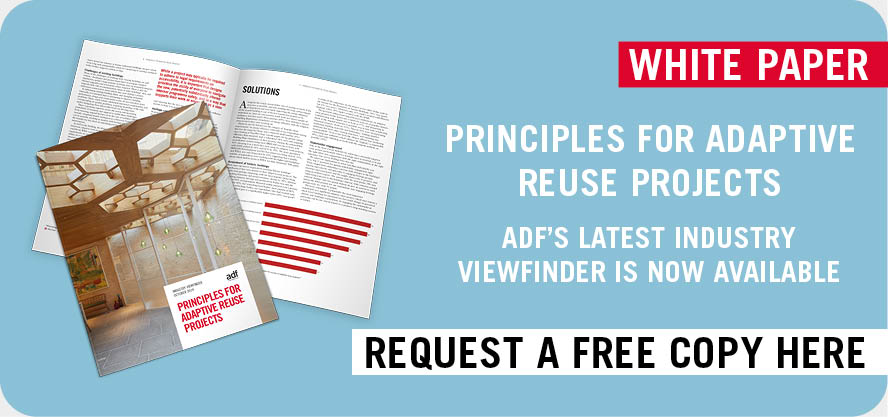Looking at colour choices for the facades of a residential property or development, Lisa Grosse from Cedral looks at current trends which clients are buying into
The science of how different colours in our surroundings make an impact on how we feel and its application in construction and design has a long history. Sir Isaac Newton created the first colour wheel, proving that light contains the full spectrum of the rainbow. In the 19th century Goethe studied the impact of colour on human psychology and since then we have advanced the understanding of the subconscious and physiological human responses to colour. At the same time, different colours go in and out of fashion.
When considering the different options for an exterior of a home, the choice of materials including timber, stone, brick, metal, concrete, glass and fibre cement offer a variety of colours which will be integral to the overall design and appearance of the facade.
Most recently, muted, monochrome colour palettes have been particularly popular for domestic facades in the UK, particularly when it comes to cladding. Top colour choices for cladding have been white/coastal whitewash and light grey often used in tonal schemes.
However, there are now several significant trends that are having an influence on the choice of colour for facades, and more specifically, cladding. One is the impact of biophilia, which is all about touch and feel and using natural products that create a sense of wellbeing. The use of natural colours is very much in vogue right now, as is the use of wood-effect, sustainably produced panels such as fibre cement cladding.
Changing tastes & lifestyle trends
At Cedral we recently conducted our largest research study into changing tastes and lifestyle trends and found that public taste has veered towards natural colours and away from more garish or bright hues. The research also found that muted colours are less desirable now. Warm clay colours and earthy tones are proving very popular. Similarly, with a move to bring the outside into homes, natural colours which refer to minerals and plants, have seen a resurgence.
In addition to the use of natural colours, there seems to be a greater interest in being more expressive and experimental with colour for domestic exteriors, playing with layers, and for the outside to make a statement. From front doors to window frames and masonry, there are tremendous opportunities to be creative with colour – whether with smaller finishing touches or at scale. Black, charcoal, vibrant greens and cream hues are among the shades that are trending. Other colour selections coming to the fore are natural greens, grey brown, blue grey and sand yellow.
Factors to consider when choosing a colour
The relatively recent concept of modular living, involving creating different spaces within a home and garden for different styles of living, is also influencing the use of colour. In the interior, colour offers a way to highlight different areas within the living space. It can also be integral in creating distinctive living spaces such as garden offices or for a new kitchen extension.
In making the right choice of colour for the exterior there are a range of factors to consider. These are everything from the context, the local landscape and the building’s orientation to the light. Durability is another key factor, particularly when it comes to outdoor colours at the mercy of the environment. Another factor relates to the aesthetics of the home, taking into account the colour of the roof, windows, doors and shutters or even the surrounding vegetation.
Creating an accent wall with a different coloured cladding or a textured finish with a patterned colour scheme and mixing in additional colours are good ways to break up expanses of large white walls.
Contrasting colours – such as blue and orange, red and green or yellow and purple – will create a dramatic effect when used together. Harmonious colours – such as blue and green and orange and red create a tranquil, balanced effect when used together. Their receding qualities are also a great way to give a smaller building more impact. A way to create a strong visual appeal is to choose a colour such as a red for the facade and then to add accessories or outdoor plants in contrasting colours. Another is to use ‘pops’ of contrasting colours for the trim.
Light colours for homes’ exteriors are enhanced by even the slightest ray of sunshine, and are ideal therefore for shaded houses and cladding. They also help to highlight the architectural design, making the house look larger. White is a clean and sophisticated choice for any home exterior and works well in every setting, but a sun-facing wall may be blinding at certain times of the day. Greens and blues help the exterior blend in within a natural environment. Warm natural colours – reds, terracottas and ochres – give a warmth and original touch.
Crucially, it’s important to have a good understanding of the local authority’s attitude towards acceptable style and colour when it comes to cladding especially for conservation areas and Areas of Outstanding Natural Beauty.
The right choice of colour can make a big difference to the aesthetic appeal of a building and the decision about the colour scheme of the external envelope should be given careful consideration.
Lisa Grosse is brand manager at Cedral






